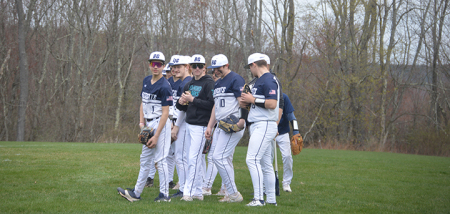Chenango SPCA: Where Do Our Dogs Come From?
Published:
November 15th, 2023
 Winnie is one of many dogs available for adoption at CSPCA. (Submitted photo)
Winnie is one of many dogs available for adoption at CSPCA. (Submitted photo)
by Patrick McLaughlin,
Executive Director
CHENANGO COUNTY – Before we get started, I want to preface this week's comments with a note that, while I am going to make several references to New York law, I am not a lawyer, and nothing I write should ever be mistaken for legal advice. There are experts for that, and I'm not one of them.
The majority of dogs taken in by the Chenango SPCA come from Dog Control Officers. Last year, DCOs accounted for 70% of our dogs. This year, they account for 81%. What exactly is a Dog Control Officer, and why does such a large proportion of our dog population come from them?
The title of Dog Control Officer comes from Article 7 (Section 113) of New York's Agriculture and Markets Law, which covers agriculture, livestock, and companion animals like dogs. Section 113 says:
Each town and city, and each village in which licenses are issued, shall appoint, and any other village and any county may appoint, one or more dog control officers for the purpose of assisting, within the appointing municipality, with the control of dogs and the enforcement of this article.
In other words, all towns and cities are expected to appoint a Dog Control Officer to enforce Article 7. For villages, appointing a Dog Control Officer is only required if the village issues its own dog licenses. Counties can also choose to appoint a county-wide Dog Control Officer (or a team of them!).
What do Dog Control Officers do? As the name suggests, they "control" dogs. That means they enforce the laws in Article 7, and any local laws about dogs. Here are some examples:
Section 109 of the Agriculture and Markets Law requires all dogs over four months to be licensed and have a current rabies vaccination. Section 111 requires all licensed dogs to wear an identification tag on their collar. Section 117 requires DCOs to seize any dog that isn't under the control of its owner.
What happens when a DCO seizes a dog? That depends on the reason. If the dog is properly licensed and tagged, the DCO may return it to its owner. If not, the dog needs to be sheltered until the owner can prove compliance with the rabies, license, and identification requirements of the law. That’s where the Chenango SPCA comes in. DCOs from the 22 municipalities that have a contract with us are allowed to bring their dogs here to be cared for.
How long does an owner have to get their dog back? Again, it depends on the reason for seizure and whether the dog is or is not properly licensed. The owner has at least five days to meet the requirements above, then the dog automatically becomes the property of the town whose DCO seized it. For dogs sheltered at the Chenango SPCA, there are actually two automatic transfers: first from the owner to the town, then from the town to the SPCA. The result is that, after the required waiting period, the dog is legally owned by the Chenango SPCA, and we can put it up for adoption.
What about fees? If a dog owner wants to get their dog back during the waiting period, they have to pay the required fees for a rabies vaccination (if the dog isn’t current), the license, and the town’s redemption fee. The state sets minimum redemption fees that the town must charge, but the town has the right to set higher fees, if they choose. The Chenango SPCA also charges a fee to cover our costs, which we can waive. After the waiting period, we have the freedom to charge whatever adoption fee we feel is appropriate.
Are towns required to use the services of the Chenango SPCA? No, they’re not. Section 114 of the Agriculture and Markets Law gives them options. They can run their own shelters, they can collaborate to establish multi-jurisdiction shelters, or they can contract with private organizations like the Chenango SPCA to ensure that their shelter needs are met.
That’s an important concept: to ensure that needs are met. While each town (and city, and village that issues dog licenses) has a responsibility to make sure that the dogs seized by their DCO are properly housed, the Chenango SPCA also has a responsibility to the individual dog owners of our community to make sure that there’s a place for them to surrender dogs safely when the need comes up.
There are many legitimate reasons why someone might come to that extremely difficult decision. To name a few: Death, disability, or illness of the owner. Loss of housing. Divorce or separation. These are difficult situations, and people trying to surrender a dog rather than set it loose are doing the right thing. A shelter that’s already full can’t do much to help them.
Comments








